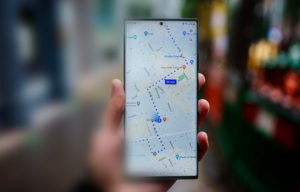Introduction to Gamification
In today’s competitive marketing landscape, engaging your audience requires more than just traditional tactics. Gamification—integrating game-like elements into non-game contexts—has emerged as a powerful strategy to captivate and retain your audience. By tapping into psychological principles such as reward systems, competition, and social interaction, businesses can create more compelling and interactive marketing campaigns. This article explores how gamification works, its psychological underpinnings, and practical tips for incorporating these elements into your social media strategies to boost engagement.
The Psychology Behind Gamification
Reward Systems
One of the core psychological principles behind gamification is the reward system. In games, players are motivated by rewards such as points, badges, and levels. These rewards trigger the release of dopamine, a neurotransmitter associated with pleasure and satisfaction. In a marketing context, incorporating reward systems can drive user engagement by offering incentives for participation. For instance, a brand might reward users with points for completing certain actions, which can be redeemed for discounts or exclusive offers. This not only encourages ongoing interaction but also fosters a sense of achievement and progression.
Competition
Another powerful psychological driver is competition. Games often include competitive elements that challenge players to outperform others or achieve high scores. This competitive spirit can be harnessed in marketing campaigns to motivate users to engage more deeply with your brand. For example, hosting contests or leaderboards where participants compete for prizes can spur greater participation and excitement. The element of competition can also drive users to share their achievements on social media, further amplifying your campaign’s reach.
Social Interaction
Social interaction is a third psychological principle that makes gamification effective. Many games incorporate multiplayer modes or social features that encourage players to interact with each other. Applying this principle to marketing involves creating opportunities for users to connect, collaborate, or compete with one another. Social interaction can be fostered through features like collaborative challenges, team-based competitions, or social sharing options. By integrating social elements, you can enhance user engagement and build a sense of community around your brand.
Tips for Implementing Gamification on Social Media
1. Launch Interactive Contests
Contests are a popular way to incorporate gamification into your social media strategy. Create engaging contests that require users to perform specific actions, such as sharing a post, tagging friends, or submitting creative content. Offer attractive prizes or rewards to incentivize participation. For instance, a fashion brand might run a photo contest where users share their best outfits for a chance to win a gift card. Contests not only boost engagement but also generate user-generated content that can be leveraged for future marketing efforts.
2. Develop Interactive Stories
Interactive stories on platforms like Instagram and Facebook can enhance user engagement by allowing followers to participate in real-time. Utilize features like polls, quizzes, and swipe-ups to create interactive experiences that capture users’ attention. For example, a travel company could create an interactive story where followers vote on their preferred vacation destination or choose their ideal itinerary. By involving users in the decision-making process, you make them feel more connected to your brand.
3. Implement Reward Programs
Reward programs are an effective way to incentivize user behavior and encourage repeat engagement. Develop a points-based system where users earn rewards for completing various actions, such as liking posts, sharing content, or making purchases. Create a tiered rewards system with different levels of benefits to motivate users to reach higher levels. For example, an online retailer could offer loyalty points that can be redeemed for discounts or exclusive products. Reward programs not only drive engagement but also foster brand loyalty.
4. Introduce Gamified Learning
Gamified learning experiences can be a valuable tool for educating your audience while keeping them engaged. Consider creating educational content with game-like elements, such as quizzes, challenges, or interactive tutorials. For instance, a tech company could develop a quiz that tests users’ knowledge about their products, with rewards for high scores. Gamified learning not only provides value to users but also enhances their understanding of your brand and offerings.
Conclusion
Gamification offers a dynamic way to enhance audience engagement by incorporating game-like elements into your marketing campaigns. By leveraging psychological principles such as reward systems, competition, and social interaction, you can create more compelling and interactive experiences for your audience. Implementing gamification strategies on social media platforms—such as contests, interactive stories, and reward programs—can significantly boost user engagement and foster a stronger connection with your brand. Embrace the power of gamification to captivate your audience and drive meaningful interactions.







